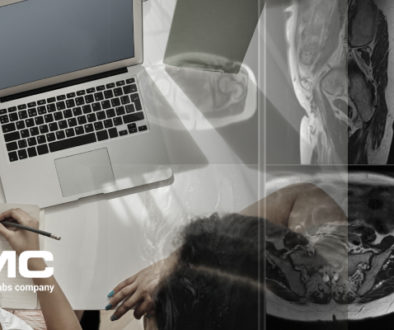One night on the South Coast
One of TMC’s core values is to walk in your customers shoes. This sounds quite good but is often easier said than done. At TMC we like to practice what we preach so we thought: how better to do this than work in the A&E department at one of our busiest clients? That’s exactly what both TMC Southern Business Development Executive Charles Hurst and Head of Business Unit UK c did on a cold and rainy evening in early January. Charles and Matthew went to one of our South Coast customers to see what a night there looks like.
There is a strange quietness when walking hospital corridors during the night. We’re only accustomed to being there in the day with the hustle and bustle of patients going to clinics and doctors and nurses doing their rounds so arriving to an empty main reception came as a bit of a surprise. Not so much when we walked to the A&E department where we started to see the number of people in beds. Eager to find out how the night would go the experiment started.
We met with the lead trauma clinician who was doing a round handover, he was there for the night and therefore needed to know what was going on in the medical bays and where the patients were. We expected there to be a bit of “what are you doing here?”, but we couldn’t have been more wrong. Despite being clearly very busy, we were introduced to all the clinicians and staff and told if we needed to ask questions, to stop them and to do so. (Just not if they had called the resus team)
To not disturb the team, we hid in the background until the time came when a CT was needed for an elderly patient who had presented in A&E following a fall. We watched the clinician on the system registering the patient and then calling the TMC team in Reading for a triage request. The phone was answered and the clinician was put through to the radiologist in Australia for a consultation. It was at the point that we were able to advise of the new TMC portal where this process was 100% automated!
We followed the porters down to the CT scanner and sat with the radiographers whilst they scanned the patient and then pressed the magic “Send to TMC” button. With the laptop on, we logged on to the TMC portal and showed them that the images had come through to TMC, but not only that, the images had already been read by Artificial intelligence programmes to show there was no bleed on the brain.
The patient was taken back up to the ward and with it, we followed them back to the clinician to tell him the good news that the CT scan was all clear. When we arrived back in A&E, the clinician was one step ahead of us. He could see the completed report was already back in the local RIS. After some TLC, the patient was discharged.
This was TMC teleradiology at its best: seamlessly moving images from a local hospital to an awake radiologist in Australia who, thanks to the latest AI solutions, could safely report and get the patient seen to in the right way. And for the radiographers, there was no hassle, simply scanning, sending, and monitoring the TMC Portal for progress. Matthew Ginder added “Both sides learnt a lot form the visit. We have some small improvements to make to the process but walking in our customers shoes really made us proud to see how much of a good service TMC provide, and it certainly gave me more admiration for the staff working through the night to help patients in the NHS.”
Matthew Ginder



